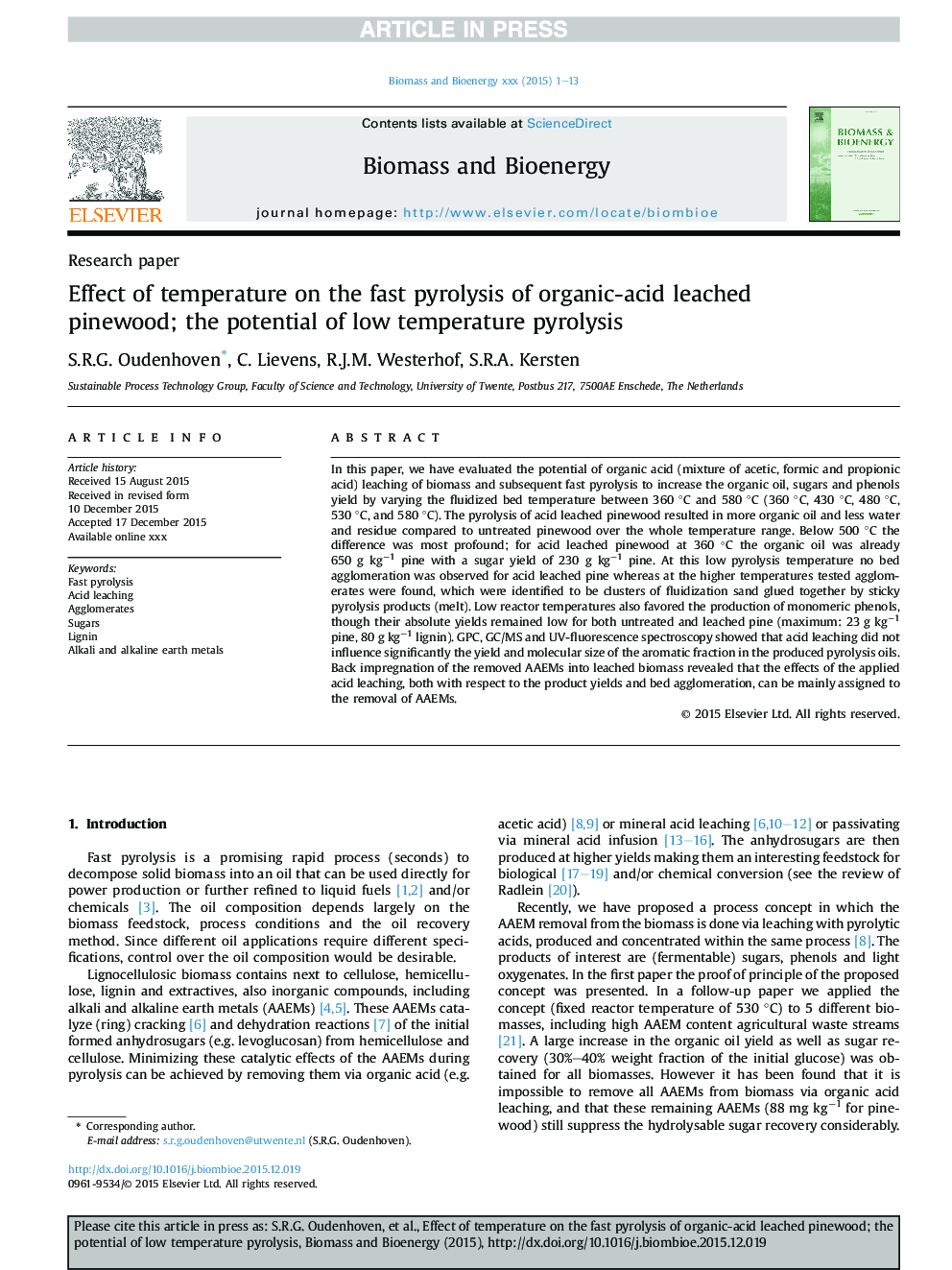| Article ID | Journal | Published Year | Pages | File Type |
|---|---|---|---|---|
| 7063294 | Biomass and Bioenergy | 2016 | 13 Pages |
Abstract
In this paper, we have evaluated the potential of organic acid (mixture of acetic, formic and propionic acid) leaching of biomass and subsequent fast pyrolysis to increase the organic oil, sugars and phenols yield by varying the fluidized bed temperature between 360 °C and 580 °C (360 °C, 430 °C, 480 °C, 530 °C, and 580 °C). The pyrolysis of acid leached pinewood resulted in more organic oil and less water and residue compared to untreated pinewood over the whole temperature range. Below 500 °C the difference was most profound; for acid leached pinewood at 360 °C the organic oil was already 650 g kgâ1 pine with a sugar yield of 230 g kgâ1 pine. At this low pyrolysis temperature no bed agglomeration was observed for acid leached pine whereas at the higher temperatures tested agglomerates were found, which were identified to be clusters of fluidization sand glued together by sticky pyrolysis products (melt). Low reactor temperatures also favored the production of monomeric phenols, though their absolute yields remained low for both untreated and leached pine (maximum: 23 g kgâ1 pine, 80 g kgâ1 lignin). GPC, GC/MS and UV-fluorescence spectroscopy showed that acid leaching did not influence significantly the yield and molecular size of the aromatic fraction in the produced pyrolysis oils. Back impregnation of the removed AAEMs into leached biomass revealed that the effects of the applied acid leaching, both with respect to the product yields and bed agglomeration, can be mainly assigned to the removal of AAEMs.
Related Topics
Physical Sciences and Engineering
Chemical Engineering
Process Chemistry and Technology
Authors
S.R.G. Oudenhoven, C. Lievens, R.J.M. Westerhof, S.R.A. Kersten,
